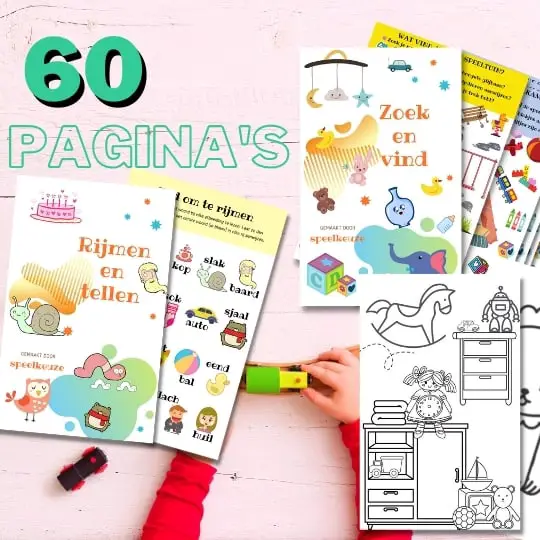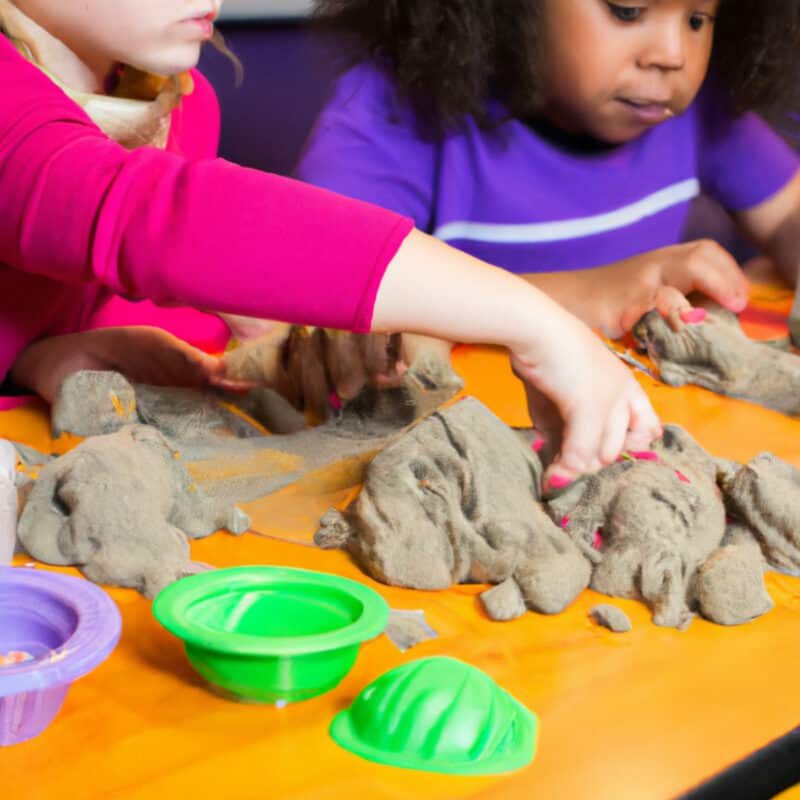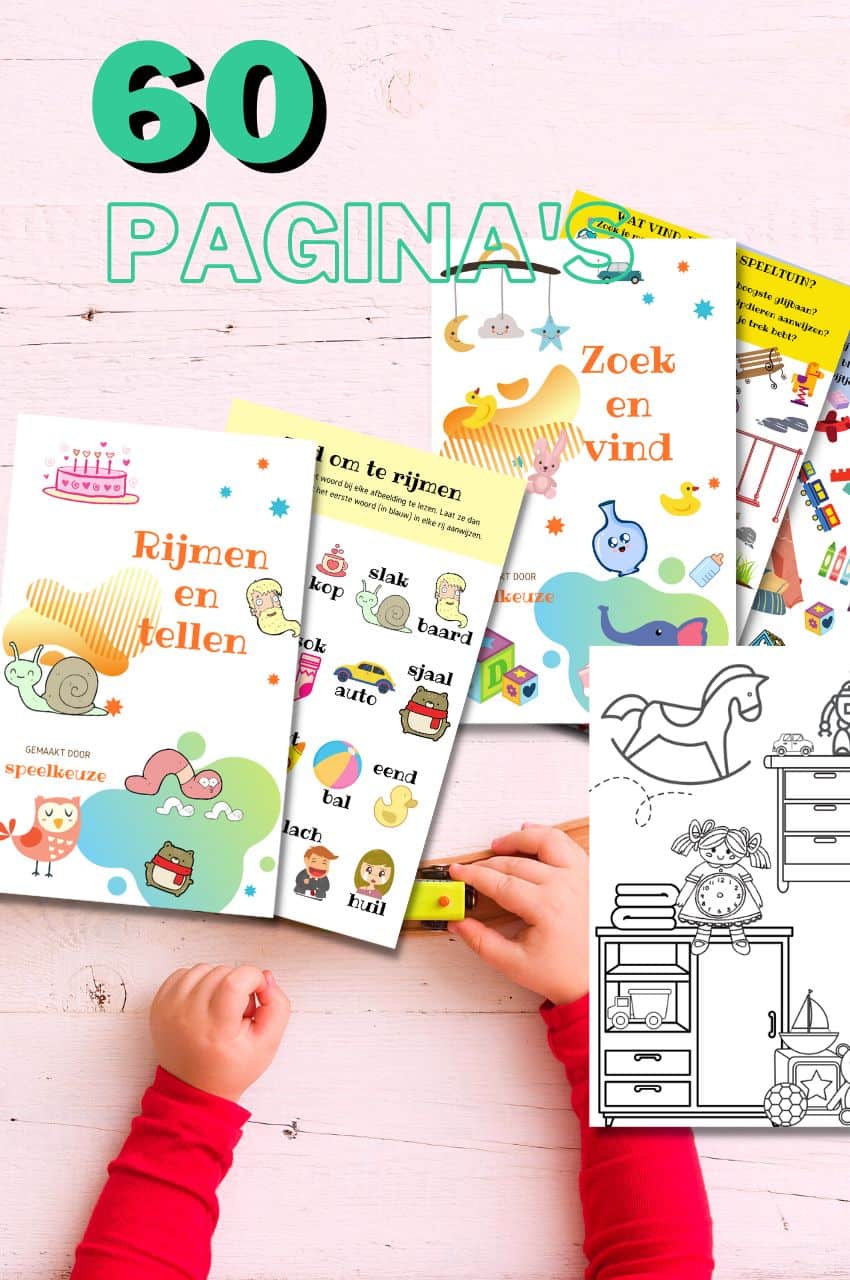Is Kinetic Sand Better Than Play Doh Clay? I think so

Always something to do for the holidays or rainy day?
Play Choice now has the ultimate activity book collection, with over 60 pages of fun coloring pages and educational puzzles.
Kinetic sand en Play doh are both children's favorite play products.
But what exactly are these toy products, and what are the similarities and differences? And why is kinetic sand better than Play-Doh clay?

Kinetic sand and play doh clay are both very well rated, but kinetic sand just a little higher.
That's because you have more flexibility to build with (just make an entire sand castle out of play doh) and it's generally a bit easier to clean up after playing.

From toddler to toddler activity book collection
Educational games and coloring pages for 3 to 6 years
Your toddler and preschooler will love this e-book, along with the accompanying printables. He or she can play with it at every stage of development, together with mom and dad.
Buy at Bol.comWhat we discuss in this comprehensive post:
Kinetic sand
Kinetic sand is 'magic' play sand that consists of 98% normal sand and 2% a non-toxic binding agent.
Kinetic sand is reusable and you can knead and make shapes with it. It is malleable like clay, but feels silky soft.
Sometimes it almost seems magnetic!
It also does not dry out, is anti-bacterial and wheat and gluten free.
The sand is suitable for children from 3 years old. If your child accidentally swallows some sand, it's not a disaster.
Play doh
Play-Doh is a play dough that – just like kinetic sand – is intended for children aged 3 years and over. It is available in different colours.
Like kinetic sand it is non-toxic and is basically reusable.
The clay is easy to knead and it is the most famous children's clay in the world. You may have played with it as a child.
Play-Doh consists of the following ingredients: wheat flour, sodium chloride, calcium chloride, potassium hydrophosphate, aluminum sulfate, water and oil.
Fortunately, if your child accidentally takes a small bite and swallows it, it is not dangerous either.
However, if your child cannot tolerate gluten, you have to be careful because the product contains wheat flour.
What are the Similarities Between Kinetic Sand and Play-Doh?
As you have already read from the above, kinetic sand and Play-Doh both fun toy products for children (and adults!).
They are both non-toxic and basically reusable.
In addition, both products are good for children's development. They promote fine motor skills and also exercise sensorimotor skills.
They are great for sensory play. Sensory play is any kind of play that stimulates the senses – be it taste, touch, smell, sight and/or sound.
They also stimulate a child's creativity and the possibilities are endless. The fantasy is thereby stimulated.
Both can also be done kinetic sand as Play-Doh have a therapeutic effect on both children and adults.
It is soothing to play with clay or sand. It's the perfect way to find yourself. The products can help to process certain events.
Not only events that have already happened, but also events that are yet to come.
You can use it to prepare for future events.
What are the differences between Kinetic Sand and Play-Doh?
But there are also differences between the two products.
Of course they both have a different structure, because we are talking about sand and clay.
And that ensures that they have a different composition.
And while it's not a big deal for either product if your child accidentally swallows some of it, with Play-Doh it can be a problem if your child can't tolerate gluten.
Play-Doh is not gluten-free, and kinetic sand is that.
Moreover, it dries kinetic sand does not dry out, while Play-Doh can dry out.
Also read: Can you make clay malleable and moist again?
Why is Kinetic Sand better than Play-Doh?
Kinetic sand is still better than Play-Doh in a number of ways.
First it is easier to clean up. Play-Doh compound is everywhere; on the couch, flattened on the floor and on your child's clothes.
It sticks to everything. If your child plays with it a lot, you will have to vacuum constantly.
Small pieces of clay break off, so it is best to clean them up immediately before the whole house is covered in clay.
And when Play-Doh gets into clothes, you can't always get it out.
Kinetic sand has the property that it only sticks to itself, so it does not simply stick to other things or people.
And of course that saves a lot of rubbish.
Kinetic sand Moreover, it does not dry out, while Play-Doh can dry out.
If a dried-out piece of Play-Doh lands on the floor and you accidentally step on it, it can hurt for a while!
Furthermore kinetic sand hypoallergenic: children who have certain allergies – such as a gluten allergy – can play with the sand without any problems.
That's not the case for Play-Doh, because it does contain gluten.
Also not unimportant: kinetic sand will last a very long time and will not mold.
And because you clean it up easily and it leaves almost no leftovers, the amount of sand you have won't decrease that quickly either.
So your children can enjoy it for years to come kinetic sand. Play-Doh, on the other hand, has an expiration date and can become moldy over time.
This means Play-Doh won't last as long as it should or you'd like.
So you may need to throw the clay away after a few play sessions or if it hasn't been played with for a while.
Play-Doh can additionally spread bacteria while kinetic sand is anti-bacterial.
When is Play-Doh better than Kinetic Sand?
An advantage of Play-Doh over kinetic sand is that it is quite salty, and if your child tries to put it in his/her mouth, he/she will likely spit it out quickly.
Furthermore kinetic sand a bit more expensive than Play-Doh.
So if budget is really an issue, Play-Doh may be a better choice. Provided your child can tolerate gluten, of course.
Did you know that you yourself kinetic sand can make? Fun to do with the kids and save money, here's the full recipe!
Can you use Play-Doh clay toys for Kinetic Sand?
You can use Play-Doh clay for kinetic sand. If you mix these two products, you would get a kind of dry Play-Doh clay, so to speak, and not much of the sand would be visible anymore.
It becomes a coarse mass and it crumbles faster.
Kinetic sand only sticks to itself and falls apart a bit, but if you mix it with Play-Doh it takes away that effect.
The mass becomes stickier. So you can use and mix the products at the same time, but the result is not necessarily great or better than the two products separately.
What you can of course do is to use the molds and devices you use for Play Doh for the kinetic sand.
Kinetic sand can easily be put in a cupcake mold to bake a delicious cake.
This of course applies also for most of the toys you use on the beach!
Also read: Can you separate kinetic sand again after it has been mixed?

Always something to do for the holidays or rainy day?
Play Choice now has the ultimate activity book collection, with over 60 pages of fun coloring pages and educational puzzles.
Joost Nusselder, the founder of Speelkeuze.nl is a content marketer, father and loves trying out new toys. As a child he came into contact with everything related to games when his mother started the Tinnen Soldaat in Ede. Now he and his team create helpful blog articles to help loyal readers with fun play ideas.